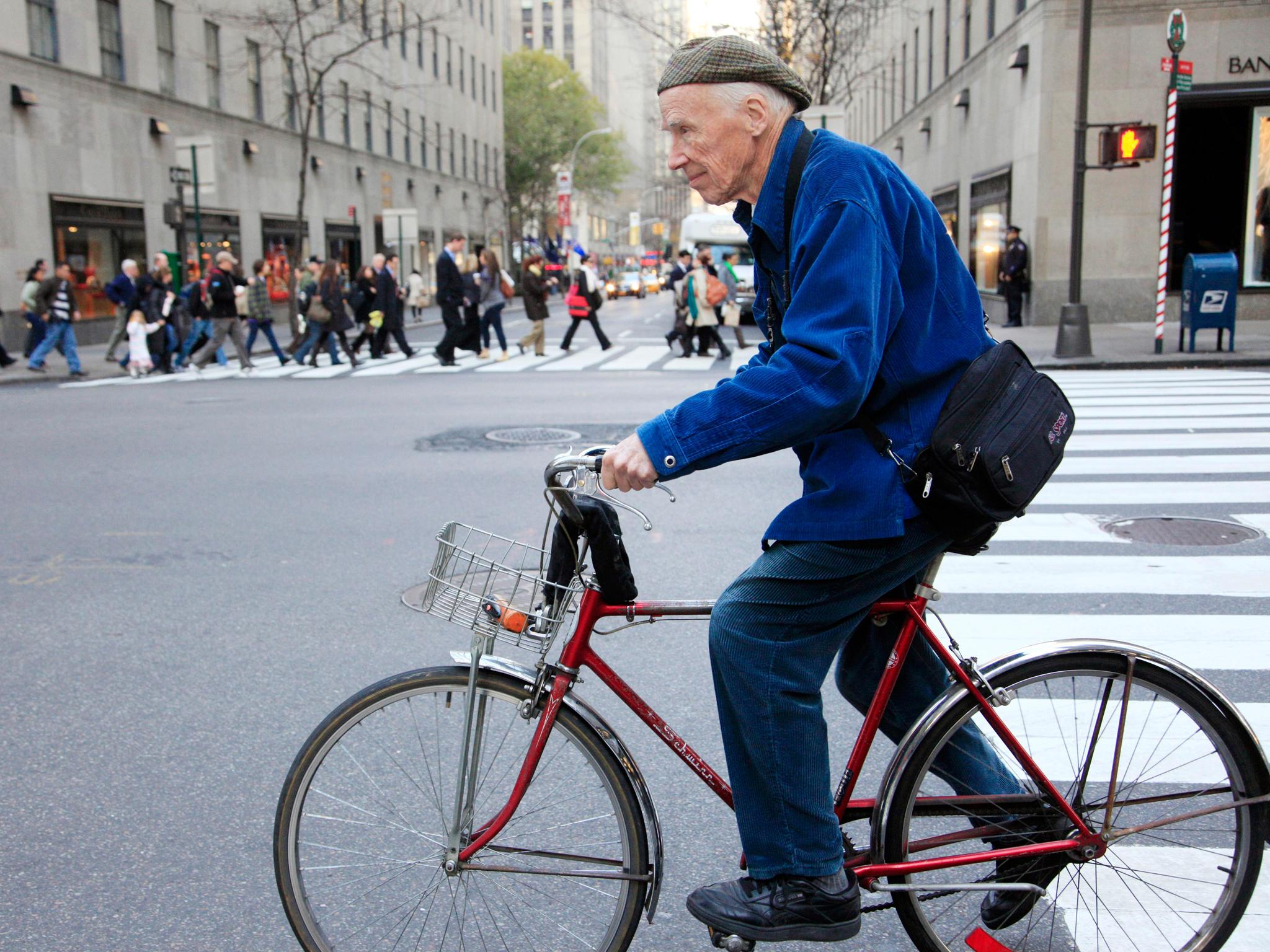Bill Cunningham dead: Iconic 'New York Times' street fashion photographer dies aged 87
The photographer's tenure with the Times spanned four decades

Your support helps us to tell the story
From reproductive rights to climate change to Big Tech, The Independent is on the ground when the story is developing. Whether it's investigating the financials of Elon Musk's pro-Trump PAC or producing our latest documentary, 'The A Word', which shines a light on the American women fighting for reproductive rights, we know how important it is to parse out the facts from the messaging.
At such a critical moment in US history, we need reporters on the ground. Your donation allows us to keep sending journalists to speak to both sides of the story.
The Independent is trusted by Americans across the entire political spectrum. And unlike many other quality news outlets, we choose not to lock Americans out of our reporting and analysis with paywalls. We believe quality journalism should be available to everyone, paid for by those who can afford it.
Your support makes all the difference.Bill Cunningham, the New York Times fashion photographer who revolutionised the art of capturing portraits of everyday people on the streets, has died in New York City. He was 87.
Mr Cunningham had recently been hospitalised after suffering from a stroke. New York Times spokesperson Eileen Murphy announced his death Saturday.
“His company was sought after by the fashion world’s rich and powerful, yet he remained one of the kindest, most gentle and humble people I have ever met,” publisher and chairman of the Times, Arthur Ochs Sulzberger Jr, said. “We have lost a legend, and I am personally heartbroken to have lost a friend.”
Mr Cunningham first joined the Times in 1978 and had since become a cultural anthropologist of sorts, the paper said in his obituary. With his blue jacket, bicycle, and small camera, Mr Cunningham captured a variety of styles, bodies, and faces with his lens.
“To see a Bill Cunningham street spread was to see all of New York. Young people. Brown people. People who spent fortunes on fashion and people who just had a strut and knew how to put an outfit together out of what they had and what they found,” said executive editor of the newspaper, Dean Baquet.
Of himself, Mr Cunningham said discretion was perhaps his most important tool, second only to the camera.
“I go to different places all the time. And I try to be as discreet as I can,” he wrote in 2002. “My whole thing is to be invisible. You get more natural pictures that way.”
The Boston-born photographer moved to New York in 1948 after dropping out of Harvard University. He took a job as a hatmaker and in an ad agency before spending a short time in the Army. Upon his return, he began writing fashion reviews for the Chicago Tribune, before joining the Times.
He published Facades in 1978. The book featured models - most photographs included fellow photographer Editta Sherman - in period costumes in front of historical sites, such as the GM building and St Paul’s Chapel. Mr Cunningham donated all 88 silver gelatin prints to the New York Historical Society.
The photographer was featured in the 2010 documentary film Bill Cunningham New York, which was met with overwhelmingly positive reviews.
Mr Cunningham found peace in his work, and he listened to what the street was telling him.
“I go out every day. When I get depressed at the office, I go out, and as soon as I’m on the street and see people, I feel better,” he said.
“But I never go out with a preconceived idea. I let the street speak to me.”
Join our commenting forum
Join thought-provoking conversations, follow other Independent readers and see their replies
Comments